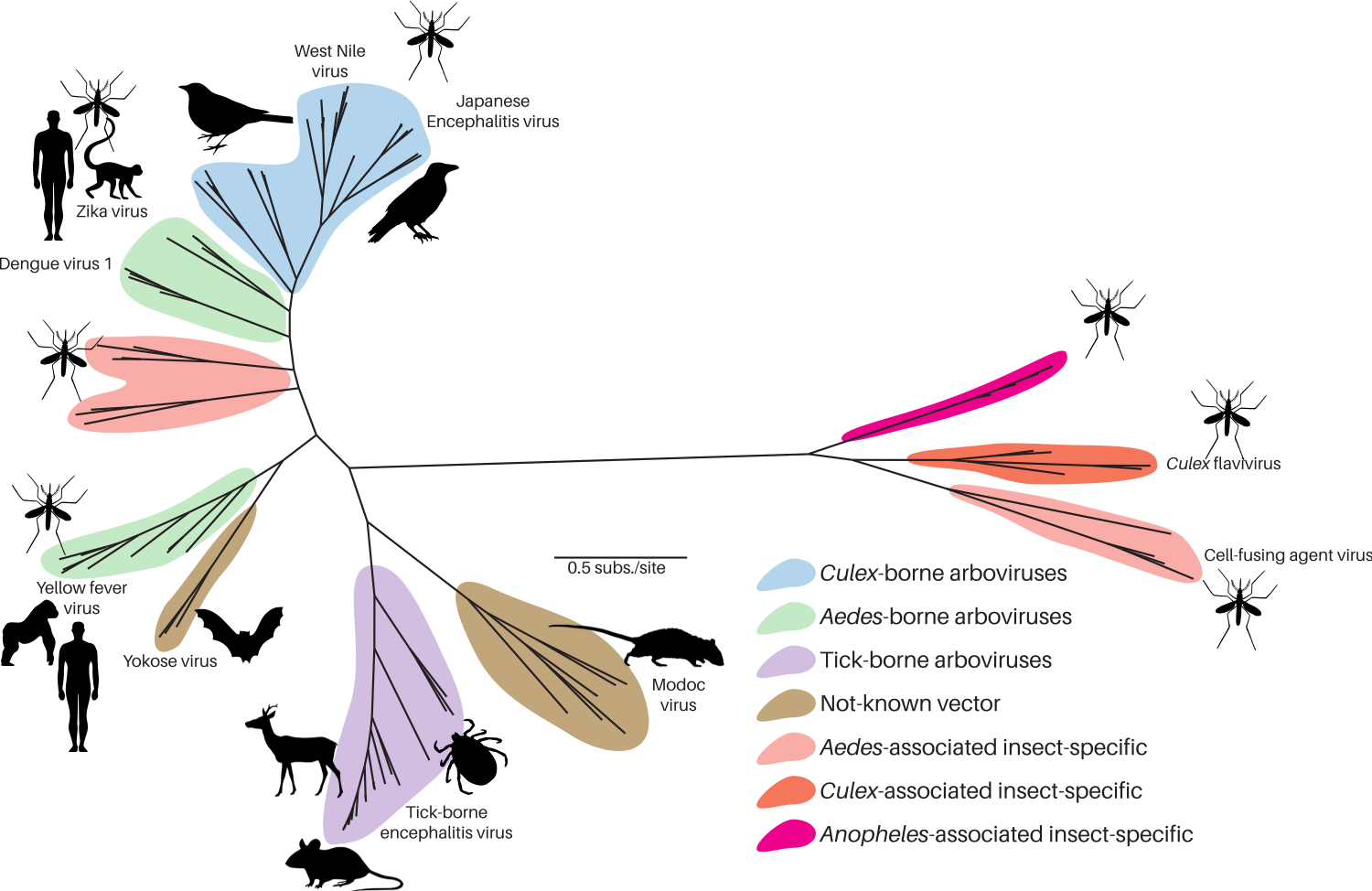Research
We mostly study members of the Flavivirus genus. Indeed, despite a relatively conserved set of genetic and structural features, its members infect a wide range of hosts (such as primates, rodents, birds, fishes, arthropods and nematodes; sometimes even several groups at once) and present the full array of symbiotic interactions with their host (from pathogenic to mutualistic) as well as infection dynamics (from acute to chronic). Moreover, they count some important human pathogens, such as Zika, dengue, or yellow fever viruses.

CC BY 4.0 Sebastian Lequime (2020)
Evolutionary interactions between viruses
When considering viruses, co-infections (simultaneous) or super-infections (one being already present before the second) are common in nature. Flaviviruses are no exception, and co-infections in mosquitoes between insect-specific and arboviral flaviviruses are expected to be widespread. Functional interaction between them has been shown, but is yet to be characterized, especially the potential evolutionary interaction between these related viruses.
Molecular ecology/epidemiology
Viral genomes contain a lot of information. About viruses themselves, of course, but also about how they evolved and spread in space and time. Using phylodynamics, their evolutionary study can uncover some insights into virus ecology/epidemiology: How do they spread? Where do they come from? What is their host range?
